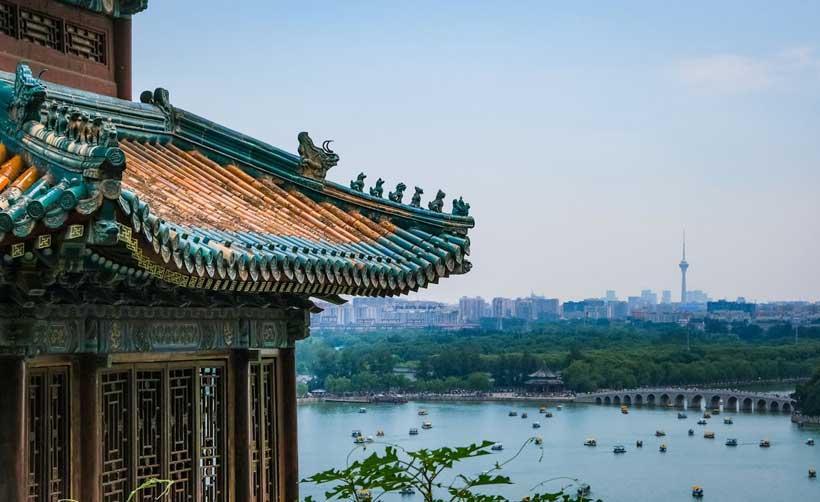By
Jaimine Vaishnav
Africa-Press – Mauritius. As the sun rose over Washington, D.C., in early 2025, the world braced itself for the return of a familiar force—Donald J. Trump, now sworn in once again as President of the United States. His second coming was no quieter than the first. Almost immediately, he resumed his favorite battlefield: trade war with China. From the White House podium, he vowed to quadruple tariffs on Chinese imports, denouncing Beijing as “the greatest economic threat the United States has ever faced.”
But as Trump reignites his tariff tirade, a crucial question looms: Will it work this time?
To answer that, one must look beyond the headlines, into the depth of China’s economic transformation, its resilience, and its unmatched mastery of long-term strategy. This is not just a story of politics or trade. It is the chronicle of a nation that turned every adversity into an advantage—and a cautionary tale for any leader who underestimates the power of a focused dragon.
From Rice Paddies to Robotics (1978–2025)
To understand China’s present, one must rewind to 1978. Deng Xiaoping, the pragmatic architect of modern China, famously declared, “It doesn’t matter if a cat is black or white, as long as it catches mice.” That aphorism became the blueprint for a hybrid model—state capitalism infused with socialist characteristics.
Back then, China’s GDP per capita hovered below $200. It was an insular, agrarian economy. But by 2023, it had transformed into a $17.5 trillion juggernaut, second only to the U.S. in nominal terms and ahead in purchasing power parity (PPP).
The engine? Vision, trade liberalization, and demographic capital.
China embraced globalization at full tilt—joining the WTO in 2001, opening Special Economic Zones (SEZs), attracting foreign direct investment (FDI), and building an ecosystem where labor was cheap, logistics were efficient, and policy was predictable.
The result? From shoes to smartphones, China became the world’s factory. But this wasn’t merely economic growth—it was strategic industrial policy at scale.
Trump’s Trade War—A Hammer Searching for Nails
In 2018, President Trump launched a trade war under the guise of correcting trade imbalances, addressing intellectual property (IP) theft, and punishing China’s state-led capitalism. Over $350 billion in Chinese goods were hit with tariffs. China countered with $110 billion in retaliatory tariffs, strategically targeting U.S. agriculture—a political pressure point.
But the real-world fallout was unintended:
A study by the Peterson Institute found that 92% of the tariff burden fell on American consumers.
U.S. manufacturing contracted, and by 2023, over 60% of firms reliant on Chinese inputs either offshored production or ate rising costs.
Farmers faced existential crises as soybean and corn exports plummeted.
Ironically, the trade deficit with China remained stubborn—over $275 billion in 2023. The tariffs may have rallied voters, but they didn’t dent Beijing’s trajectory.
The Dragon’s Response—Dancing Through the Fire
China didn’t react emotionally—it recalibrated. In 2022–23, it expanded trade partnerships under the Regional Comprehensive Economic Partnership (RCEP), encompassing 15 Asia-Pacific economies and 30% of global GDP.
Exports surged to $3.6 trillion in 2023. Even U.S. imports from China exceeded $427 billion.
Beijing’s agility was visible:
Industrial Policy: $47 billion was funneled into semiconductor self-sufficiency. Huawei, once crippled by sanctions, rebounded with its own chip ecosystem and 6G research.
Export Upgradation: China’s export basket evolved—no longer just textiles and toys. Electric vehicles (BYD, NIO), solar panels (LONGi), lithium batteries, and green tech took center stage.
Strategic Diversification: Through the Belt and Road Initiative (BRI), China deepened ties with Africa, Latin America, and the Middle East—solidifying supply chains and markets.
Dual Circulation Strategy: Beijing pivoted toward domestic consumption while maintaining global integration—shielding itself from external shocks.
China’s cultural exports, from TikTok to Temu, grew. In 2023, Temu became the most downloaded app in the U.S., and TikTok’s algorithm subtly reshaped digital culture worldwide.
The Geoeconomic Imperative
In geopolitics, trade is power. And China has mastered the art of geo-economics—leveraging trade routes, infrastructure, and debt diplomacy to expand influence.
Consider this:
28.7% of global manufacturing came from China in 2023.
Over 80% of rare earth minerals critical for electronics and defense originate from China.
China dominates green tech—60% of global solar panels and over 50% of global lithium battery output.
Even amidst calls for “decoupling,” American giants like Apple, Tesla, and Qualcomm remain intertwined with Chinese supply chains. Apple’s push to move iPhone production to India yielded only 7% offshore output by late 2023.
India, Vietnam, and Mexico remain contenders, but none can match China’s scale, policy coordination, or labor ecosystem.
The Illusion of Decoupling
Western policymakers often speak of “strategic autonomy” or “friend-shoring.” But global supply chains are sticky. In 2023:
Over 30% of critical pharma and electronics components used in the U.S. were of Chinese origin.
Chinese investment in Europe surged by 15%, especially in EV infrastructure and green hydrogen.
Sanctions on Chinese tech spurred—not stalled—Beijing’s domestic innovation.
This is supply chain realism: the world remains deeply interwoven with China. Decoupling, if attempted rapidly, would be economically suicidal.
The China Playbook—Long-Termism and Statecraft
Unlike the West’s quarterly capitalism, China plays the long game. It builds five-year plans, invests in future industries, and educates at scale.
In 2022, China produced 4.7 million engineers—more than the U.S., India, and Europe combined.
Over 800 million people have been lifted out of poverty since reforms began.
The country is now the largest investor in artificial intelligence, green hydrogen, and quantum computing.
Infrastructure is destiny. While U.S. highways crumble, China builds high-speed rail, smart ports, and smart cities at a pace unseen since post-war America.
Trump’s Tariffs Redux—A Political Gambit, Not an Economic Plan
Trump’s renewed promise to “quadruple tariffs” is not rooted in macroeconomic strategy—it’s electoral calculus. In the swing states of Ohio, Pennsylvania, and Michigan, trade rhetoric plays well. But it doesn’t rewire supply chains or rewrite economic fundamentals.
Trade deficits aren’t inherently bad. They often reflect currency strength and consumer demand. Manufacturing jobs aren’t returning en masse because automation and global wage dynamics have changed the labor game.
Tariffs are blunt instruments in a digital, services-driven world. They may please constituents but rarely produce the intended structural shifts.
The Silent Expansion—China’s Soft Power Surge
While the West built narratives of Chinese aggression, Beijing built influence. Through Confucius Institutes, cinema, cuisine, and tech, Chinese soft power has seeped into global consciousness.
TikTok has 1.6 billion users. Chinese dramas stream globally. Temu offers $2 gadgets with free delivery.
More than any other power, China understands that the future of hegemony is hybrid—equal parts military restraint, technological prowess, and cultural relevance.
What the World Can Learn from China?
Strategic Patience: Real power is silent, accumulative, and compounding.
Industrial Policy Isn’t Evil: The invisible hand needs the arm of the state.
Infrastructure First: You can’t digitize potholes.
Workforce Matters: Invest in engineers, not hedge fund managers.
Trade Is Not War: It’s leverage.
A Chinese proverb says, “When the winds of change blow, some build walls. Others build windmills.”
Trump, for all his populist firepower, built walls—literal and economic. China? It built windmills, solar panels, ports, chips, and trade routes. While slogans screamed, the dragon danced. Adapted. Scaled.
The future of global trade won’t be decided in rally chants or tariff lists. It will be written in factories, classrooms, tech parks, and ports—where China already leads.
To compete, the world must understand the dragon. Do not fear it. Not fight it. But learn why it works.
Because in this story, the fire didn’t burn the dragon.
It forged it.
moderndiplomacy
For More News And Analysis About Mauritius Follow Africa-Press







